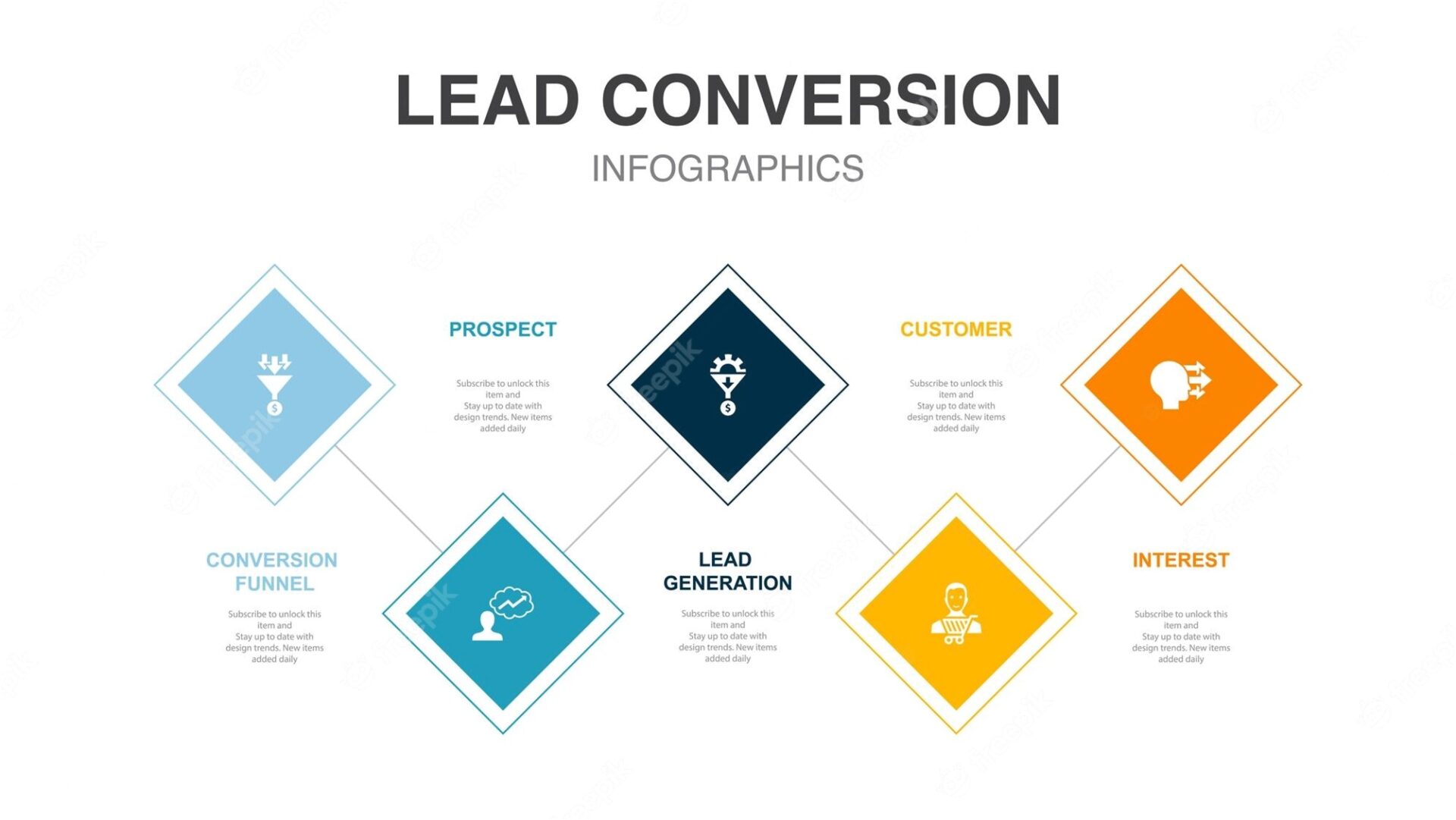As a business owner or marketer, you know that lead generation is just the first step in lead management towards achieving your sales goals. It is by converting these leads into paying customers that you generate revenue and keep the business running. That’s where lead management comes in. In this article, I’ll explain what lead management is, why it’s important, the lead management process, best practices, and common mistakes to avoid. to effectively manage your leads and improve your results.
What is lead management?
Lead management is the process of capturing, tracking, and nurturing potential customers or leads until they are ready to make a purchase. It’s about developing a relationship with your prospects by providing them with relevant information and building trust in your brand.
Lead management begins when a prospect shows interest in your product or service by filling out a form or requesting more information. Once you have their contact information, you can start moving them through the sales funnel until they become a paying customer.
The importance of effective lead management
Effective lead management is essential to the success of any business. It lets you prioritize your leads, identify the most promising leads, and focus your resources on those most likely to convert. By nurturing leads and building relationships, you increase the chances of converting them into paying customers.
Effective lead management also helps improve customer satisfaction by providing a personalized experience for each customer. By understanding their needs and providing them with relevant information, you can build trust in your brand and increase the likelihood of a sale.
The lead management process
The lead management process consists of several steps that help you effectively manage your leads. These steps are as follows
- Capture
The first step in lead management is to capture them. It involves collecting their contact information using forms, landing pages, or other lead generation techniques.
It’s important to make sure your lead capture forms are optimized for conversion and that you’re collecting the right information. This will help you qualify leads and identify the most promising prospects.
- Assessment and prioritization
Once you’ve captured a lead, the next step is to evaluate and prioritize it. It’s about assessing their needs, their interests and their buying intentions.
You can use lead scoring to prioritize leads based on their level of engagement with your brand and likelihood of conversion. This allows you to focus your resources on the most promising prospects and improve your conversion rates.
- Recurrence
The nurture stage is about building a relationship with your prospects and providing them with relevant information that meets their needs and interests. This can be done through email marketing, content marketing, or other lead nurturing techniques.
It’s important to personalize your communication and deliver value to your prospects at every stage of the sales funnel. This builds trust in your brand and increases the likelihood of a sale.
- Conversion
The final stage of lead management is conversion. This is when your prospect becomes a paying customer by making a purchase or signing up for your service.
It’s important to make the conversion process as easy and seamless as possible to reduce friction and improve customer satisfaction.
Prospect nurturing techniques
Prospect nurturing is an essential part of the lead management process. It’s about providing your prospects with relevant information and building a relationship with them to increase the likelihood of a sale. Here are some techniques for effective lead nurturing:
- Email Marketing
Email marketing is one of the most effective lead nurturing techniques. It allows you to provide personalized communication to your potential customers at every stage of the sales funnel.
You can use email marketing to provide relevant information, promote your products or services, and build trust in your brand. It is important to segment your email list and personalize your communication to improve the effectiveness of your email marketing campaigns.
- Content marketing
Content marketing involves creating and sharing valuable content that meets the needs and interests of your potential customers.
By providing relevant and informative content, you can build trust in your brand and position yourself as a thought leader in your industry. Content marketing can include blog posts, videos, infographics, and other types of content.
- Social media
Social media is a powerful tool for lead nurturing. They allow you to connect with your potential customers on a personal level and provide them with relevant information.
You can use social media to share content, answer questions, and build relationships with your potential customers. Choosing the right social media platforms and engaging with your prospects consistently is important to improving the effectiveness of your social media campaigns.
The role of technology in lead management
Technology plays a vital role in lead management. It helps automate processes, track leads, and deliver personalized communication at scale. Here are some examples of technologies that can improve your lead management:
- Customer Relationship Management (CRM) Software
Customer relationship management software allows you to effectively track and manage your potential customers. It provides a centralized database of prospects, their contact details, and their engagement with your brand.
You can use CRM software to automate processes, prioritize leads, and provide personalized communication. It is important to choose the right CRM software and adapt it to your business needs in order to improve the effectiveness of your lead management.
- Marketing Automation Software
Marketing automation software allows you to automate your lead nurturing processes. It provides tools for email marketing, lead scoring, and lead segmentation.
You can use marketing automation software to provide personalized communication to your potential customers at every stage of the sales funnel. Choosing the right marketing automation software and setting up your campaigns correctly is important to improve the effectiveness of your lead nurturing.
Lead Management Best Practices
Effective lead management requires a strategic approach and a commitment to continuous improvement. Here are some best practices to help you effectively manage your leads:
- Define your target audience to start lead management
To effectively manage your leads, you need to define your target audience. It’s about understanding their needs, interests and buying intentions.
You can use customer personas to paint a detailed picture of your ideal customer and craft targeted messages that resonate with them.
- Develop a lead evaluation system
Lead Scoring allows you to prioritize your leads based on their level of engagement with your brand and their likelihood of converting.
You can use lead scoring to focus your resources on the most promising prospects and improve your conversion rates.
- Provide personalized communication to carry out lead management
Personalized communication is essential for effective prospect nurturing. It’s about providing relevant information and building a relationship with your prospects at every stage of the sales funnel.
You can use email marketing, content marketing, social media, and other techniques to provide personalized communication to your potential customers.
- Continuously measure and improve
To improve the effectiveness of your lead management , you must continually measure and improve your processes.
You can use metrics like conversion rates, prospect engagement, and customer satisfaction to identify areas for improvement and make data-driven decisions.
The most common mistakes to avoid in lead management
Effective lead management requires a strategic approach and a commitment to continuous improvement. Here are some common mistakes to avoid:
- Not defining your target audience
If you don’t define your target audience, you risk wasting resources on leads that are unlikely to convert.
It’s important to understand your ideal customer and develop targeted messages that resonate with them.
- Ignore Lead Scoring
Lead scoring allows you to prioritize your leads and focus your resources on the most promising prospects.
If you don’t use lead scoring, you risk wasting your resources on leads that are unlikely to convert.
- Provide generic communication
Generic communication is ineffective in lead nurturing. It’s important to provide personalized communication that meets the needs and interests of your prospects.
You can use email marketing, content marketing, social media, and other techniques to deliver personalized communication to your prospects.
- Do not measure and improve
If you don’t measure and improve your lead management processes, you risk missing improvement opportunities and losing potential customers.
It is important to continuously measure and improve your processes to increase the effectiveness of your lead management.
Lead management automation tools
Lead management automation tools can help you automate processes, track leads, and deliver personalized communication at scale. Here are some examples of lead management automation tools:
- HubSpot
HubSpot is a comprehensive marketing automation platform that provides tools for capturing, evaluating, nurturing, and converting leads.
You can use HubSpot to automate your lead management processes and improve your lead nurturing efficiency.
- Marketo
Marketo is a marketing automation platform that provides tools for lead management, email marketing, and lead nurturing.
You can use Marketo to automate your lead nurturing processes and deliver personalized communication to your leads at scale.
Measure the effectiveness of lead management
To measure the effectiveness of your lead management, you need to track metrics like conversion rates, prospect engagement, and customer satisfaction.
By tracking these metrics, you can identify areas for improvement and make data-driven decisions to improve your lead management processes.
Common lead management challenges and solutions
Lead management can be challenging, especially for companies with limited resources. Here are some common challenges and solutions to help you effectively manage your leads:
- Limited resources
Limited resources can make it difficult to manage leads effectively. To overcome this problem, you can use automation tools to streamline your lead management processes and focus your resources on the most promising prospects.
- Lack of alignment between sales and marketing
Lack of alignment between sales and marketing can lead to ineffective lead management. To overcome this problem, you need to create a common vision for lead management and develop processes that align with your business goals.
- Inconsistent prospect nurturing
Inconsistent lead nurturing can result in missed opportunities and lost leads. To overcome this problem, you need to implement a consistent lead nurturing process that delivers personalized communication to your prospects at every stage of the sales funnel.
Conclusion
Effective lead management is essential to the success of any business. It involves capturing, tracking, and nurturing potential customers or leads until they are ready to make a purchase. By prioritizing your prospects, providing them with personalized communication, and continually measuring and improving your processes, you can improve your bottom line and achieve your sales goals.
Remember to define your target audience, develop a lead scoring system, provide personalized communication, and continually measure and improve your processes to effectively manage your leads and improve your results.
What is a lead and why is it important for a business?
How can you generate leads for your business?
How can leads be effectively managed?
4. What is a funnel and how can you use it to manage leads?
How can you measure the effectiveness of your lead management?
What are the best practices to improve your lead management?











